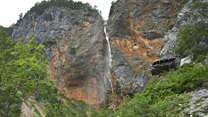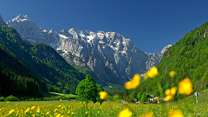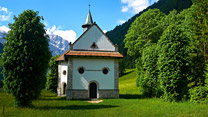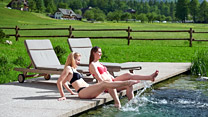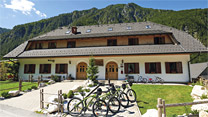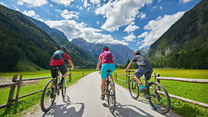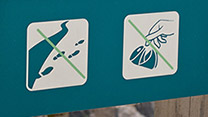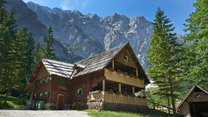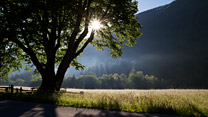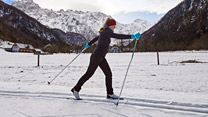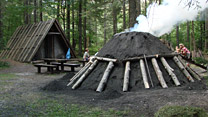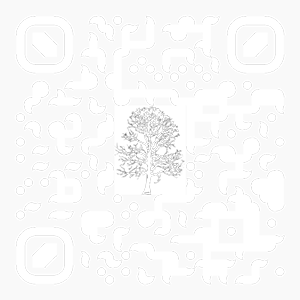Natural values
A VALLEY OF NUMEROUS FEATURES
The Logar valley is known for its many waterfalls. Among them is the Rinka waterfall, which is one of the highest free-falling waterfalls in Slovenia. Nature has created numerous caves on the steep slopes above the valley.
The valley and the slopes are also home to a variety of mountain flowers, among which there are many rare and even endangered species. On Okrešelj, a botanical oasis, as well as elsewhere in the park, you can admire Cypripedium calceous, Carniolan lillies, auricula, Zois’s bellflower, gentian, edelweiss, and Kamnik orchids.
The multitude of protected assets is a reflection of the park’s natural diversity, as there are seven natural monuments in the area of the park as well as 35 natural features of national and local importance.
The following have been officially claimed natural monuments:
- The Savinja river (from the source onwards)
- The source of the Črna river (the second source of the Savinja)
- The Savinja waterfall (Rinka)
- The Palenk waterfall
- The Palenka gorge
- The Okno v Luknji natural window
- The Matkovo Okno natural window
The entire landscape park is characterised by its high density of natural values. Within the park there are also a few areas where three or more of these are located over a relatively small area. These areas are:
- under Okrešelj (rock shelter at Orlovo gnezdo, Rinka and the Dedec capped rock)
- Brložnica (Brložnica cave, Brložnica cliff, Brložnica dedec rock, Spodmol pri oknu rock shelter, Okno v Luknji natural window and Brložnica waterfalls)
- steep ravines below Klemenškova planina mountain pasture (waterfall beneath the tunnel, rock shelter beneath the tunnel and Sušica stream)
- lower part of the Ivovec riverbed (Ivovec waterfall, boulder field and boulder na razpotju)
You can read more about the nature of the landscape park in an excerpt from Tomaž Gerl's master's thesis.
OKREŠELJ CIRQUE
Okrešelj is a glacial amphitheatre cirque under the steep walls of Turska gora, Rinka, Križ and Mrzla gora. It is interesting due to its many high-altitude karst phenomena (Karst karren features) and the diverse mountain flora. Due to its numerous features, the Okrešelj National Park was established in 1931 on the initiative of the Savinja branch of the Slovenian Mountaineering Association.
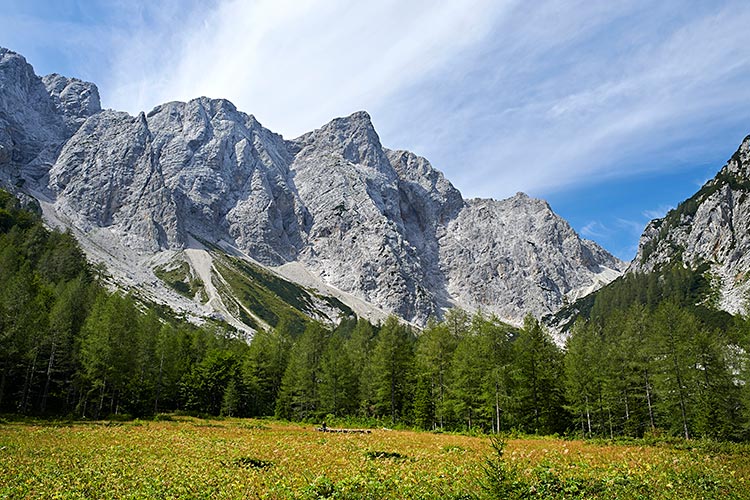
GOLICA V KREJDI
There are a number of natural features in the area of the Logar Valley Landscape Park for which no proposals for protected status have been submitted. One of them is the Golica v Krejdi strata.
This natural feature bears testament to geological occurrences in the past. It is located opposite the Logarski kot hut. The strata was exposed by the torrential Kotovec stream (this is the local name for the upper course of the Savinja before it confluence with the Jezera stream from the Matkov kot valley). The floor of the valley in this area is covered with fine-grained reddish-brown sand consisting of sand and calcerous sinter. The material was covered with a glacier, as indicated by the layer of glacial moraine deposited on it. After the glacier retreated, a lake covered the valley floor, as is evidenced by a thick layer of sedimentary clay.
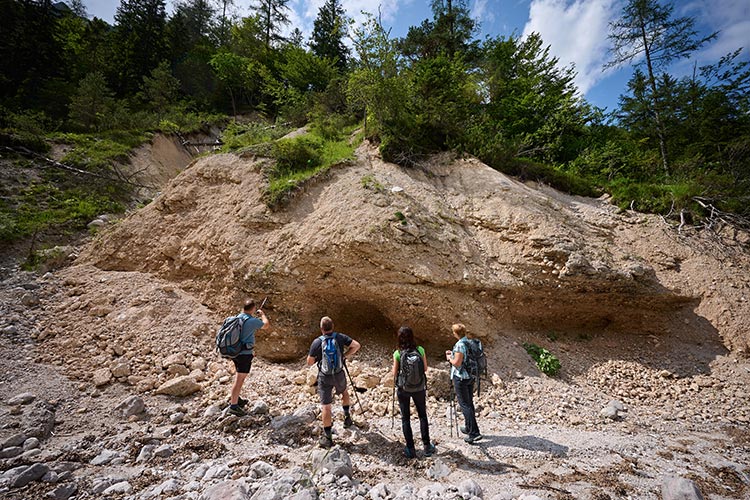
BRLOŽNICA CAVE
A glacier covered the area of Zabrložnica during the Ice Age, which formed a cirque. It is enclosed by up to 70m high walls, and a cirque about 40 metres-high has formed in these walls due to mechanical weathering and chemical action. The cirque also contains the source of a stream, which further below creates the picturesque Brložnica waterfalls.

